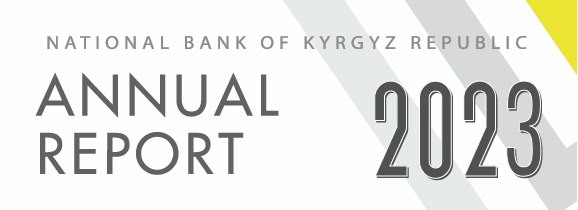Major Trends in the Deposits and Credits Market
(2009 year)
In 2009 the deposit base of operating commercial banks continued increasing; however in conditions of the economic activity decrease and risks growth in the republic, there was reduction of the economy credit financing. Increase in the deposit base of banks was provided by the growth of currency deposits. At the same time reduction of the credit portfolio was provided by the decrease in foreign currency crediting, whereas the national currency crediting on the other hand increased.
Generally, the deposit base of the operating commercial banks increased by 34.0 percent within the reporting period (without the impact of change in the currency exchange from the beginning of the year the increment constituted 25.9 percent). The credit portfolio decreased by 1.5 percent (without the impact of change in the currency exchange from the beginning of the year it decreased by 7.6 percent). As a result of the depositary base growth and reduction of the credit portfolio, the ratio of credits to deposits as of the end of the year decreased by 23.0 percentage points up to 63.7 percent in comparison with the beginning of the year (see the Diagram 1).
Moreover there was noted a decrease in the deposit base maturity and credit portfolio of commercial banks.
In the structure of deposit base, the share of demand deposits increased by 5.4 percentage points and constituted 70.1 percent by the end of the year. This provided decrease in the deposit base duration from 5.2 to 3.1 months. In the category of fixed deposits, duration decreased by 4.3 months and constituted 10.3 months.
In time structure of the operating commercial banks credit portfolio, there was decrease in long-term crediting (more than 1 year), which share constituted 69.1 percent, having decreased by 0.3 percentage points. At that duration of the credit portfolio changed inconsiderably, having increased from 24.8 to 24.9 months (see the Diagram No. 2). At the same time, in the year of 2009, there was quality degradation of the credit portfolio, which provided the increase in the overdue debts share by 1.6 percentage points up to 3.1 percent in the aggregate credit portfolio as well as the increase in the extended credits’ share from 4.6 to 7.0 percent.
Considerable increase in the share of one of the banks in the deposit market provided growth of the deposit base concentration index from 0.13 (as of beginning of the year) to 0.22 (as of the end of the year), which was equivalent to presence of four participants with equal shares and testified high concentration in the deposit market. Credit portfolio concentration index decreased from 0.10 to 0.09, which was equivalent to presence of 10 participants and testified low concentration of the credit market (see the Diagram No. 3).
In 2009, the overall volume of newly accepted deposits by commercial banks constituted 83.6 billion soms, having increased by 0.6 percent in comparison with the corresponding index of 2008. The volume of newly issued credits constituted 22.0 billion soms, which was lower than the corresponding index of 2008 by 9.7 percent. Reduction was registered for the credits, issued in foreign currency (by 21.4 percent) (see the Diagram No.5).
The weighted average interest rate on the deposit base in the national currency constituted 5.6 percent, having decreased by 0.4 percentage points from the beginning of the year, and rate on the deposits in foreign currency increased by 0.6 percentage points up to 2.2 percent. The weighted average rate on credit indebtedness in the national currency of acting commercial banks increased by 1.1 percentage points and constituted 24.9 percent, and the rate on credits in foreign currency increased by 1.0 percentage points and constituted 20.5 percent. As a result, the spread on deposit-credit transactions of commercial banks in the national currency increased by 1.5 percentage points and constituted 19.3 percent, on credits and deposits in foreign currency – by 18.3 percent, having increased by 0.4 percentage points (see the Diagram No. 4).
The weighted average interest rate on newly attracted deposits in the national currency constituted 2.8 percent, having increased by 0.4 percentage points in comparison with 2008. The growth of rates was provided by the increase in fixed deposits rates. Thus, the weighted average interest rate on fixed deposits in the national currency increased by 2.3 percentage points and constituted 9.1 percent. At that there was the increase in rates on all types of maturity, excluding the rates on deposits for the period up to 1 month. The average interest rate on deposits in foreign currency increased by 0.8 percentage points and constituted 1.7 percent. The weighted average rate on the fixed deposits in foreign currency constituted 8.0 percent within the reporting period, having increased by 2.1 percentage points. At that the growth of costs was registered for all types of fixed deposits, excluding the deposits for the period up to 1 month.
The weighted average interest rate on newly issued credits in the national currency constituted 26.7 percent, having increased by 0.7 percentage points. Increase in interest rates was registered in all sectors of the real sector, except for the credits, issued for other purposes. The weighted average interest rate on newly issued credits in foreign currency constituted 21.5 percent, having increased by 1.1 percentage points. Increase in rates was also noted in all sectors.
On the whole, the situation in the deposit and credit market in 2009 was characterized by the following positive trends:
· There was the tendency for expansion of the deposit base as well as for growth of attracted deposits by commercial banks;
· There was an increase in the average level of interest rates on newly accepted deposits in the national and foreign currencies as a result of the growth of rates on fixed deposits;
· There was a decrease in dollarization level of the credit portfolio.
Meanwhile, some unfavorable trends were also observed:
· There was decrease in volume of the credit portfolio and newly issued credits by commercial banks;
· Concentration of the credit portfolio by sectors maintained at rather high level;
· The share of long-term crediting decreased in overall volume of the credit portfolio;
· The shares of extended credits and overdue debts increased;
· The interest rate on newly issued credits increased;
· The share of demand deposits increased in the deposit base structure;
· Concentration of the deposit market increased
· The spread of credit and deposit cost in the national and foreign currencies increased.

















